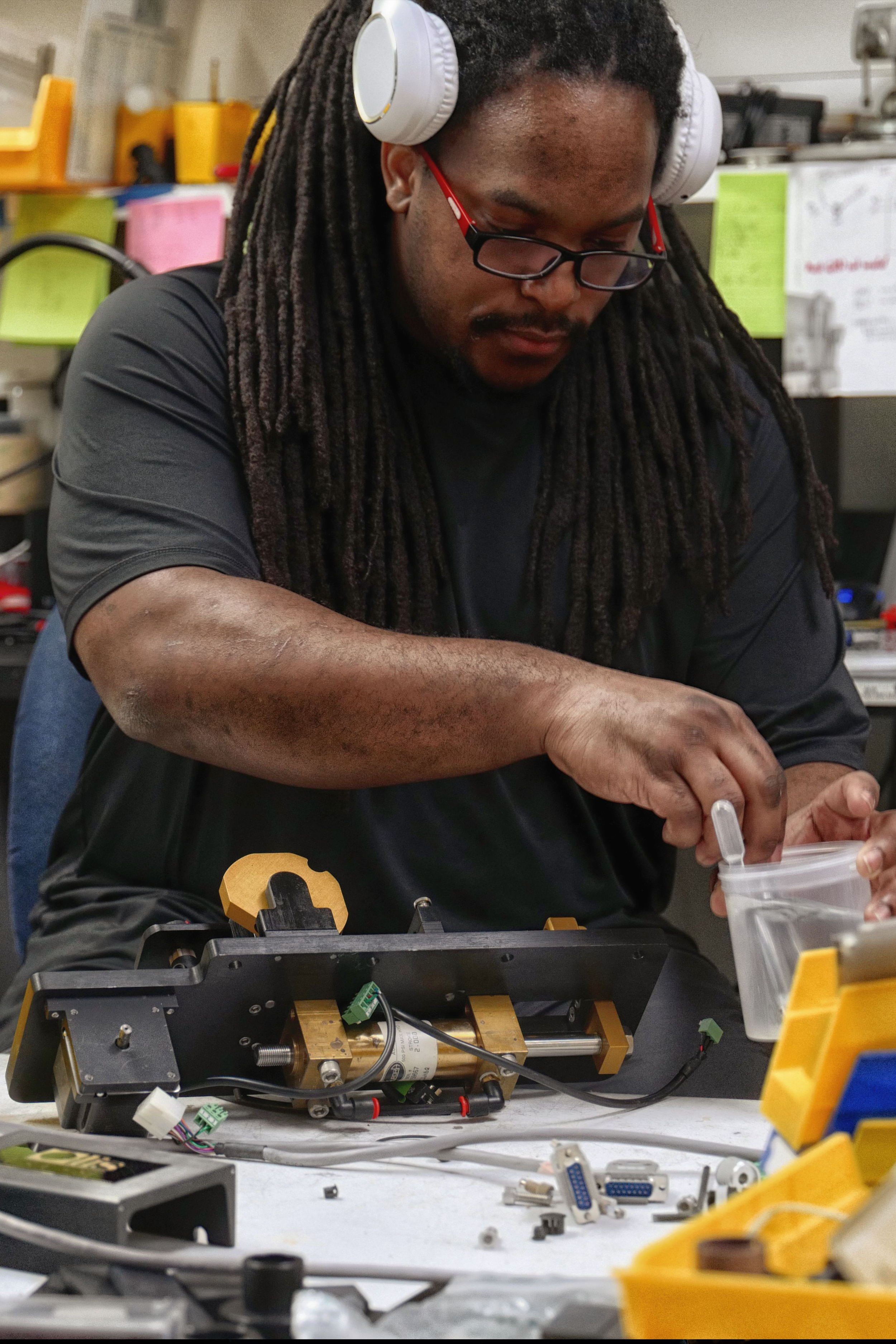A Biased View of Uv/vis/nir
Wiki Article
Fascination About Uv/vis
Table of ContentsSome Ideas on Uv/vis/nir You Need To KnowMore About Uv/vis/nirSpectrophotometers Can Be Fun For AnyoneUv/vis - An OverviewThe Best Strategy To Use For Circular Dichroism

Although spectrophotometry is most frequently used to ultraviolet, noticeable, and infrared radiation, contemporary spectrophotometers can interrogate wide swaths of the electromagnetic spectrum, consisting of x-ray, ultraviolet, noticeable, infrared, and/or microwave wavelengths. Spectrophotometry is a tool that depends upon the quantitative analysis of particles depending upon how much light is soaked up by colored substances.
Uv/vis Can Be Fun For Anyone
A spectrophotometer is typically utilized for the measurement of transmittance or reflectance of services, transparent or nontransparent solids, such as refined glass, or gases. Lots of biochemicals are colored, as in, they soak up noticeable light and therefore can be determined by colorimetric procedures, even colorless biochemicals can typically be transformed to colored compounds appropriate for chromogenic color-forming responses to yield substances suitable for colorimetric analysis.: 65 However, they can likewise be developed to measure the diffusivity on any of the noted light ranges that usually cover around 2002500 nm using different controls and calibrations.An example of an experiment in which spectrophotometry is utilized is the decision of the equilibrium constant of a service. A particular chain reaction within a solution may occur in a forward and reverse direction, where reactants form items and products break down into reactants. At some point, this chain reaction will reach a point of balance called an equilibrium point.
The Facts About Circularly Polarized Luminescence Uncovered
The quantity of light that passes through the service is a sign of the concentration of certain chemicals that do not permit light to go through. The absorption of light is due to the interaction of light with the electronic and vibrational modes of particles. Each type of molecule has a private set of energy levels connected with the makeup of its chemical bonds and nuclei and therefore will take in light of particular wavelengths, or energies, leading to unique spectral homes.
Using spectrophotometers covers numerous scientific fields, such as physics, materials science, chemistry, biochemistry. UV/Vis/NIR, chemical engineering, and molecular biology. They are commonly used in numerous industries consisting of semiconductors, laser and optical manufacturing, printing and forensic evaluation, as well as in labs for the study of chemical compounds. Spectrophotometry is often utilized in measurements of enzyme activities, determinations of protein concentrations, decisions of enzymatic kinetic constants, and measurements of ligand binding reactions.: 65 Ultimately, a spectrophotometer has the ability to determine, depending upon the control or calibration, what substances exist in a target and exactly just how much through calculations of observed wavelengths.
This would come as a service to the previously developed spectrophotometers which were not able to absorb the ultraviolet correctly.
The Best Strategy To Use For Uv/vis/nir
It would be discovered that this did not provide satisfactory outcomes, for that reason in Design B, there was a shift from a glass to a quartz prism which permitted better absorbance results - spectrophotometers (https://www.quora.com/profile/Julie-Ann-DeSa-Lorenz). From there, Design C was born with an adjustment to the wavelength resolution which wound up having three units of it producedIt irradiates the sample with polychromatic light which the sample absorbs depending on its properties. Then it is transmitted back by grating the photodiode array which detects the wavelength region of the spectrum. Ever since, the production and application of spectrophotometry devices has actually increased exceptionally and has turned into one of the most ingenious instruments of our time.

Not known Facts About Uv/vis
Historically, spectrophotometers utilize a monochromator including a diffraction grating to produce the analytical spectrum. The grating can either be movable or repaired. If a single detector, such as a photomultiplier tube or photodiode is used, the grating can be scanned step-by-step (scanning spectrophotometer) so that the detector can determine the light intensity at each wavelength (which will represent each "step").In such systems, the grating is fixed and the intensity of each wavelength of light is measured by a different detector in the selection. When making transmission measurements, the spectrophotometer quantitatively compares the portion of light that passes through a reference service and a test service, then digitally compares the strengths of the 2 signals and calculates the portion of transmission of the sample compared to the reference standard.

Report this wiki page